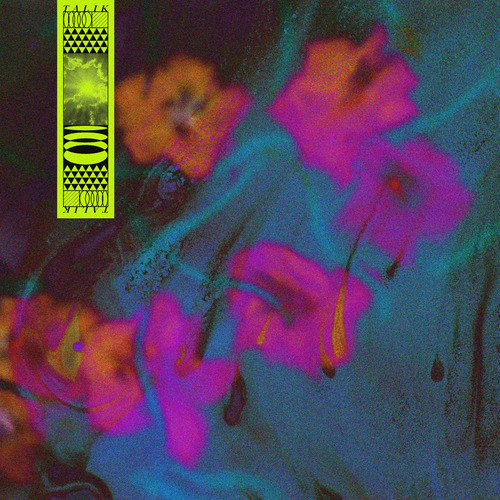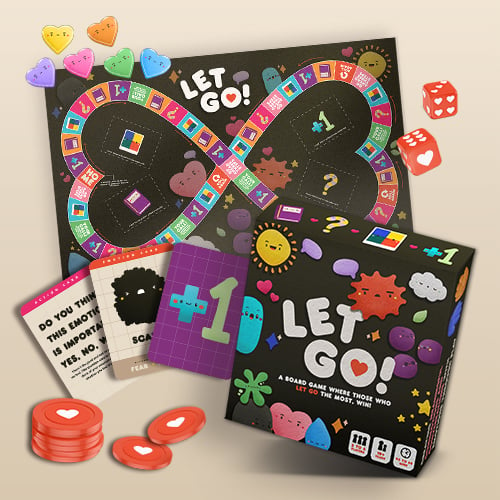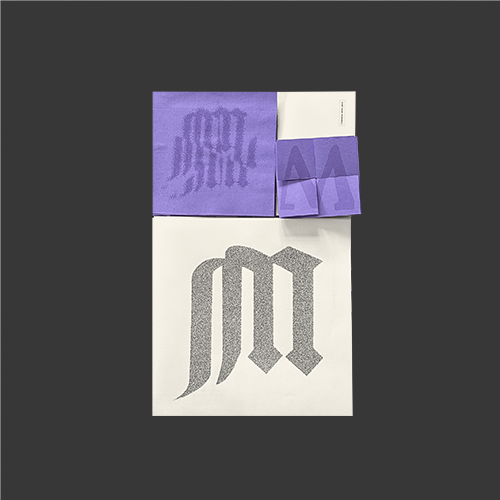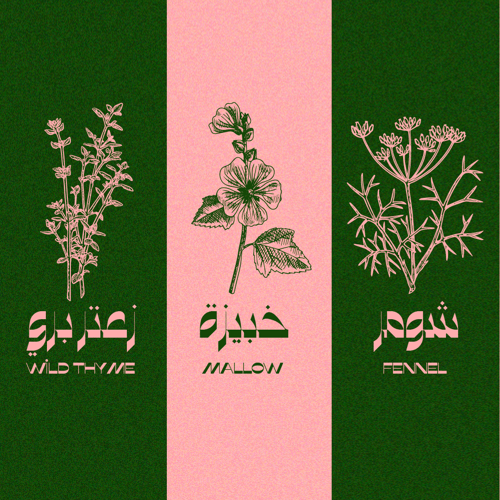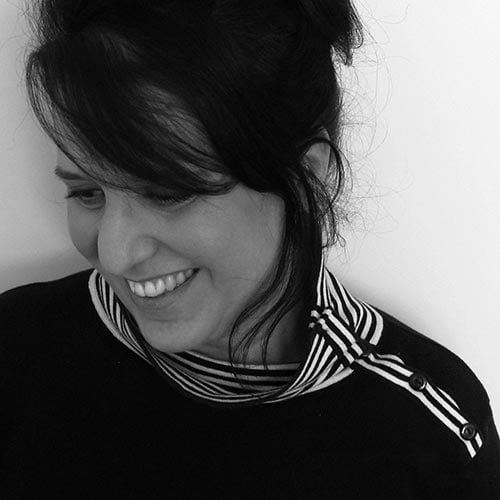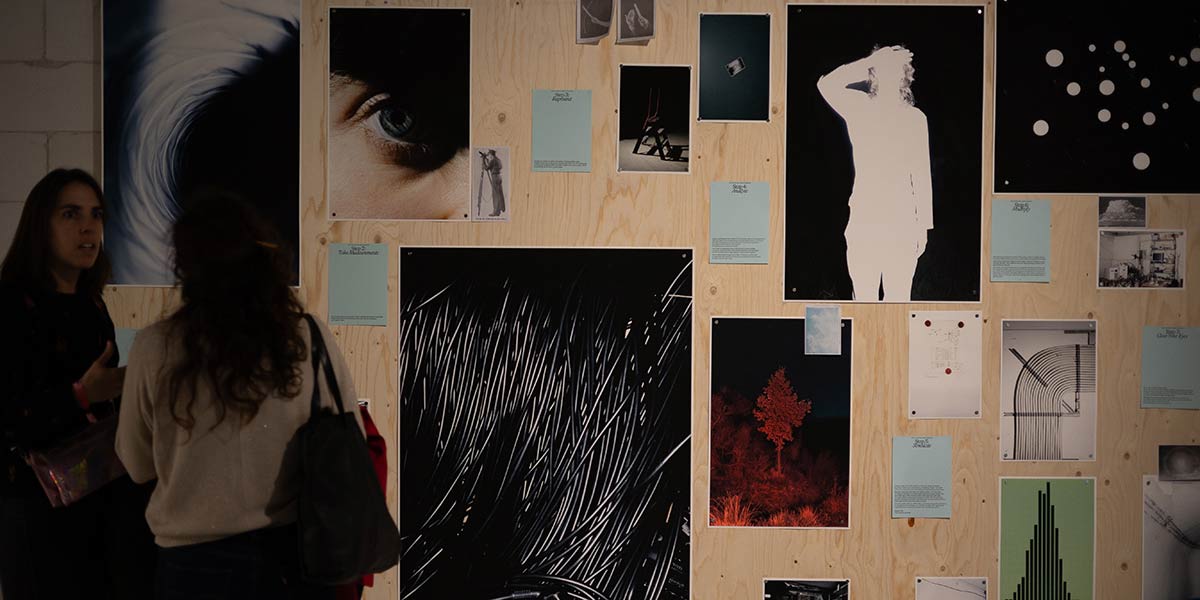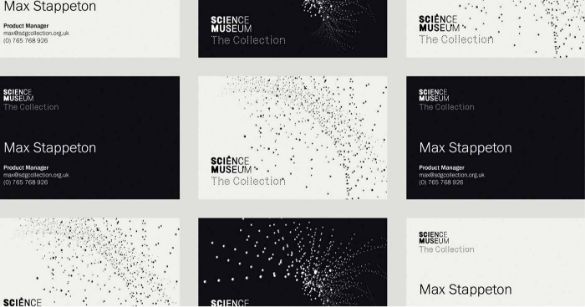Key details
Award title
MA Graphic Design (also available as PGDip)
Awarding Body
Falmouth University
Level
7
Duration
MA 2 years; PGDip 15 months
Mode of study
Online, part-time
Total MA fee
£12,150
Start dates
January and May
Next welcome week
20 May 2024
Next start date
28 May 2024
Application deadline
7 May 2024
Explore design on a global scale
This online MA in Graphic Design offers a dynamic learning environment within which to develop a rigorous, distinctive, and critically engaged practice. You will be encouraged to unpack your ethos as a designer, orientating your work in relation to contemporary, social and cultural contexts.
The course is built around a range of both practice and research-led projects. Emphasis is placed on your individual learning experience through tutorials, crits, lectures, events, and detailed online resources.
This online graphic design degree draws from Falmouth University’s rich history of design education, which is internationally recognised. Guiding you through the course, our tutors are active in industry and are shaping the future of academic design research.
This depth of experience provides a framework to support your individual ambitions as a designer. Whether those ambitions lie in a research environment, setting up your own practice, working in an existing studio, or the many spaces in-between is up to you.
Why study with Falmouth?
Join our global design community
Responding to the complex socio-political and environmental issues that define our time requires a diversity in world views. This online MA in Graphic Design attracts students from a wide range of cultural and geographic contexts and we have alumni from over forty countries and counting. This international outlook is central to the course, informing the ways in which we learn together and share ideas.
"The course pushed my creativity to explore my surroundings and produce work in my environment despite being a course purely online. It created opportunities for me to recognise the issues that resonated with me"
Quah Phaik Hoon, MA Graphic Design student
“With every module you get a new tutor, and every single one has brought something completely new. Just gaining that perspective is really, really helpful for your next stages.”
Sian Campbell, MA Graphic Design student
Hear from your Course Leader in this Q&A
In this extract from one of our online taster sessions, MA Graphic Design Course Leader Dr. Daniel Brackenbury explores the essence of design education.
He emphasises self-directed work and global perspectives, and how the diverse student body and staff worldwide creates an exciting and innovative learning environment.
[MUSIC PLAYING]
- One of the things that we really try and get students to think about on the course is their own unique persona as a designer. What makes them special and stand out as an individual? What are the things that kind of really consume their thoughts as from a design perspective? And that's the stuff that we really want to see coming through in the statements. What really drives you? Who are the designers, the creatives out there-- the artists, the filmmakers that really inspire you to want to make work?
And then also with the portfolio, choosing pieces of work carefully that really express your unique sort of vision, and as I said before, persona. I think that's such an important word. So yeah, not necessarily just all of the big, glossy professional work that you've done all of these industry logos that you've designed. We're really keen to see as well as that the more self-directed work that really expresses your own unique voice as a communicator.
[MUSIC PLAYING]
I said, what are we going to do the students to do is to really think about a subject that fascinates them to really get to grips with this subject, to explore it and to create a really individual unique piece of work about it. And also to think about how this work exists outside of the academic context-- how it exists in the real world of design. And one of the things we ask students to do is to gather feedback and insights from industry practitioners.
So to get their work out there and start showing it to people, start speaking to people about what they're doing. So that not only allows the student to gather really useful insights and feedback about their project, but it also allows students to set up really useful contacts, which they can then explore beyond the realms of the course and once they've graduated. And it's really something we try and get students to think about from the outset. Who are these industry contacts? Who are the people that are out there that you're really keen to work with in the future? And how can you tailor your work and your portfolio in such a way that allows you to reach out to those people and develop conversations with them?
[MUSIC PLAYING]
The key things, which I mentioned right at the outset is the global nature of the course. That slide that I showed where you see students sharing their creative spaces in their local communities. And on that map, we have people literally in all corners of the world. So that's very unique. You really won't find that anywhere else. It's something that's very special about this course and something that we've tried very hard to develop and push over the years. So that global outlook I think is one of the things that makes the course very, very special.
I think the range of students that we take on, so we have students at all different stages of their career which makes the conversations and the community really buzz. So we have students joining us sometimes straight from undergraduate level.
And then we have students joining us who've been in the industry for 20 or more years, who are very, very experienced and are looking to develop their own personal practice or move into a different area of design or academia. So that range of different voices that we have within that student cohort is also quite unique. I think it's something that you wouldn't necessarily see on another course.
And that variety, that range of experience and outlook really, as I say it, makes for such an interesting community and a place that is so exciting to be part of, not just for students, but for us as staff. Then speaking of staff, I think we're very lucky to have staff again joining us from different parts of the world.
We have staff-- we have a member of staff in Canada, who's a really top notch curator, art curator, graphic designer. We have a practicing designer in fintech in Namibia. So it really kind of very, very broad and very global in terms of the outlook of the voices that we get on the course as well.
And as I mentioned in the presentation, it's the range of experiences, the range of different approaches that we have as designers. We're not just you're run of the mill sitting in front of a Mac, creating logo graphic designer. We represent the subject in a much broader sense, in a much more experimental and creative sense. So I think that range of voices that you'll have access to on the course amongst the staff team, that's something that's really special as well. So there are three really important points.
There's more as well, which could go into things like the face to face events, which is so exciting. Stuff that, again, you don't really have the opportunity to necessarily engage with on other courses. But getting a cohort of students who are working in completely different fields and different parts of the world, and then bringing them together an event such as Dutch Design Week. It's fantastic, and the conversations that take place. And you can see the friendships developing. It's really rewarding and a lot of fun to be part of.
[MUSIC PLAYING]
Course details
Across a series of modules, you will position your practice in response to a range of contemporary cultural concerns and critical dialogues. Encouraged to take risks and push the boundaries of the medium, you will be prompted to form a design response to a set of specific and focussed briefs. As part of this process, you will engage with research as a fundamental aspect of the design process. You will develop a foundation of theoretical knowledge and textual awareness that will provide depth to your practice, allowing you to design and communicate with precision.
MA structure
You will need to complete four 30-credit modules and one 60-credit project (180 credits in total). All modules on the course are compulsory and must be passed in order to complete the award.
PGDip structure
You will need to complete four 30-credit modules (120 credits in total). All modules on the course are compulsory and must be passed in order to complete the award. A dissertation (major project) is not required.
Module one
Contemporary Practice (30 credits)
In this module, you are introduced to the development of graphic design today and the variety of contexts in which it is made and understood.
As with the central ethos of the course, you seek to examine local and global perspectives of the subject and the emergent skills required to address problems and deliver messages for both regional and global audiences.
Fundamentally, it is concerned with design and designing and the academic and research skills to enable effective and fully engaged participation in the course. It seeks to establish the fundamental essence of being a graphic designer today and the ability to use curiosity, risk, play and care in the delivery of a message.
Module two
History and Futures (30 credits)
In this module, you’re introduced to how graphic design interprets narrative, to distil, reform or remodel stories for a new purpose.
You will apply a more in-depth critical and contextual understanding to your practice. You will connect theory and practice (praxis), and examine key themes and issues facing the subject and those who collaborate within it today.
This module also begins to question the role that design and the designer have to play in society and the creative community and networks it is part of.
Module three
Studio and Entrepreneurship (30 credits)
Having already studied emergent fields of practice within the first module, you now examine some of the building blocks of studio practice from a business perspective.
You learn how to manage the day to day aspects of a studio’s life, but also reflect on innovative ways of working at distance and collaborating with other partners around the world.
You reflect on the subject through specific design studio case studies, structure and strategies for project work and intellectual property guidance required to develop a creative service or product today.
You will develop an actual artefact or entrepreneurial idea that will be personally or culturally inspired, but rooted firmly in a graphic design field.
Module four
Application and Interactions (30 credits)
In this module, you apply your own practice and knowledge to specific graphic design projects. The briefs allow a scoping of interests but also to question the role and ethics of working as a designer today; how ideas can be applied and how respective audiences can be understood and reached.
Throughout this module, you will engage with skills development pertinent to your areas of interest.
The module also examines the relationship between personal and highly strategic briefs. This is achieved by examining self-initiated projects, competitions and industry-set briefs; the latter being collated from annual opportunities from design studios or client set opportunities.
These client set briefs (as with the design studio) will be drawn from global organisations that enable you to respond to challenges beyond your normal experience and share learning and differing international perspectives.
Final major project (MA only)
Final Major Project (MA only) 60 credits)
Your final MA project is built on learning from previous modules and allows you to position yourself and your work for next steps following graduation. Project work therefore can develop from a number of perspectives; being research or theory led (for further research study at PhD level) or personally or professionally orientated (for independent or studio practice).
Want to learn more about any of the modules?
Get in touch with our expert Course Adviser team. They’ll be able to answer all your questions about the programme, our application process, funding options, and more.
Contemporary Practice (30 credits)
In this module, you are introduced to the development of graphic design today and the variety of contexts in which it is made and understood.
As with the central ethos of the course, you seek to examine local and global perspectives of the subject and the emergent skills required to address problems and deliver messages for both regional and global audiences.
Fundamentally, it is concerned with design and designing and the academic and research skills to enable effective and fully engaged participation in the course. It seeks to establish the fundamental essence of being a graphic designer today and the ability to use curiosity, risk, play and care in the delivery of a message.
History and Futures (30 credits)
In this module, you’re introduced to how graphic design interprets narrative, to distil, reform or remodel stories for a new purpose.
You will apply a more in-depth critical and contextual understanding to your practice. You will connect theory and practice (praxis), and examine key themes and issues facing the subject and those who collaborate within it today.
This module also begins to question the role that design and the designer have to play in society and the creative community and networks it is part of.
Studio and Entrepreneurship (30 credits)
Having already studied emergent fields of practice within the first module, you now examine some of the building blocks of studio practice from a business perspective.
You learn how to manage the day to day aspects of a studio’s life, but also reflect on innovative ways of working at distance and collaborating with other partners around the world.
You reflect on the subject through specific design studio case studies, structure and strategies for project work and intellectual property guidance required to develop a creative service or product today.
You will develop an actual artefact or entrepreneurial idea that will be personally or culturally inspired, but rooted firmly in a graphic design field.
Application and Interactions (30 credits)
In this module, you apply your own practice and knowledge to specific graphic design projects. The briefs allow a scoping of interests but also to question the role and ethics of working as a designer today; how ideas can be applied and how respective audiences can be understood and reached.
Throughout this module, you will engage with skills development pertinent to your areas of interest.
The module also examines the relationship between personal and highly strategic briefs. This is achieved by examining self-initiated projects, competitions and industry-set briefs; the latter being collated from annual opportunities from design studios or client set opportunities.
These client set briefs (as with the design studio) will be drawn from global organisations that enable you to respond to challenges beyond your normal experience and share learning and differing international perspectives.
Final Major Project (MA only) 60 credits)
Your final MA project is built on learning from previous modules and allows you to position yourself and your work for next steps following graduation. Project work therefore can develop from a number of perspectives; being research or theory led (for further research study at PhD level) or personally or professionally orientated (for independent or studio practice).
Want to learn more about any of the modules?
Get in touch with our expert Course Adviser team. They’ll be able to answer all your questions about the programme, our application process, funding options, and more.
Entry requirements
An honours degree at 2:2 level or equivalent in areas such as Graphic Design, Visual Communication, Illustration, Photography, Fashion, Textiles, Animation, Film or Fine Art. We also accept applicants with no undergraduate degree but a clear demonstration of subject related skills and knowledge whether self-taught or gained through industry experience.
You will need to submit a digital portfolio of your graphic design practice. This may include previous project work and your current work-in-progress. It can take the form of a link to your blog or website and/or be presented as an interactive PDF. This will help the admissions team assess your suitability for the MA Graphic Design.
If your first language is not English, you'll need to take one of the following tests to verify your proficiency:
- IELTS - minimum overall score of IELTS 6.5 with at least 6.0 in Reading, Writing, Speaking and Listening
- TOEFL iBT (online test) - minimum of 88 overall and at least 21 in all 4 components
- LanguageCert (online test) - a High Pass from the ESOL B2 Communicator test in reading, writing, speaking and listening (2 parts)
We accept a number of additional English language qualifications as well.
Candidates without a degree or formal qualification are also encouraged to apply. If you have prior learning or experience with this subject, you may even be able to apply for Accreditation of Prior Learning (APL). You can learn more about this via our APL guide.
For more information on course requirements, including advice regarding your eligibility, please get in touch via the form at the end of this page.
How you'll learn
With Falmouth Flexible, you access your course content, interactions with other students and tutors, and learning resources, through Canvas, an easy-to-use online platform. You can access the course wherever you are in the world, and you can stop, pause and rewind lectures whenever you want.
Each module will utilise a variety of learning approaches, for example:
- Online presentations to introduce key concepts
- Lectures
- Challenges
- Briefs
- Case studies
- Regular webinar discussions
- Keeping a reflective journal on your ongoing development
- Personal and group reflection
- Own project/business launch (MA project).
All assessments are taken and submitted online.
Assessment methods for the masters degree in Graphic Design can typically include:
- Practical assignments, for example designing a digital tool or process to aid collaboration
- Written assignments, for example writing a business plan for your own business
- Work-based assignments that are grounded in your existing practice, where you apply tools such as storytelling or market research.
As one of our students, you’ll have access to a range of services designed to support your studies and make your time with us as enjoyable as possible.
- Falmouth’s comprehensive online library of books, journals, and resources
- A Student Advisor team to answer non-academic queries
- Online software tutorials via LinkedIn Learning
- The Students' Union community
- Career advice, CV creation, practice interviews, and more via our careers platform
Fees, costs & funding
Fees
Total course fee
£12,150 (including £350 acceptance fee)
Payment options
- One-off payment
- Six equal instalments spread over a two-year period.
Payment methods
Payments can be made online or by phone, using a credit or debit card, or by bank transfer.
Please visit our fees and funding page for more information.
Typical course costs
In order to participate fully in the course, you will need to purchase the Adobe Creative Cloud and have a laptop/desktop capable of running these applications.
Creative Cloud
There is an annual subscription to the Adobe Creative Cloud available through Falmouth University for £48, which can be purchased through the software registration portal. You may also be eligible for discounted licenses through Adobe's education pricing. For more information please visit: https://www.adobe.com/uk/creativecloud/plans.html
Laptop / Desktop computer requirements
When considering your purchase of a laptop, the most important things to look out for is the CPU/RAM/graphics card, as we use software that needs a large amount of power. We recommend one with as fast a processor as you can afford (8GB of RAM minimum) and a reasonably sized screen (13" minimum, 15" is optimum), plus the following absolute bare minimum computer specifications:
Windows:
- Windows 10
- At least an i7 processor
- No less than 8-16GB Ram
- Graphics Card (nVidia 1080 minimum, not Intel Iris integrated graphics) with at least 2GB
- 256GB hard drive space minimum
- 1920 x 1080 display resolution or higher (most displays offer a higher resolution than this)
- Mouse with a scroll wheel and two buttons
Apple Macbook Pro:
- Mac OS 10.15 or newer
- At least an i7 processor
- No less than 8-16GB Ram
- Graphics Card
- 256GB hard drive space minimum
- 1920 x 1080 display resolution or higher (most displays offer a higher resolution than this)
- Mouse with a scroll wheel and two buttons
- A dongle to plug things into the laptop is also required for all modern apple laptops
Equipment
- 16 -32 GB memory stick so you can back up your work regularly (approx. £10-20)
- Wireless or Bluetooth mouse (approx. £15)
Materials/resources
The exact equipment requirements may differ according to your practice and preferred ways of working. The costs of these materials will need to be covered by you. You will need to maintain your own practice, you may need a designated area in your home, access to a studio, maker- space, materials and tools alongside hardware and software to produce digital work.
Face to face events
Travel/accommodation to face to face events (optional)
Funding options
Application offers
We offer a range of bursaries, early application offers, and alumni discounts.
Loans
You may be eligible for funding from the UK Government.
Please visit our fees and funding page for more information or call us on +44(0) 1326 332 125 to speak to a course advisor.
Total course fee
£12,150 (including £350 acceptance fee)
Payment options
- One-off payment
- Six equal instalments spread over a two-year period.
Payment methods
Payments can be made online or by phone, using a credit or debit card, or by bank transfer.
Please visit our fees and funding page for more information.
In order to participate fully in the course, you will need to purchase the Adobe Creative Cloud and have a laptop/desktop capable of running these applications.
Creative Cloud
There is an annual subscription to the Adobe Creative Cloud available through Falmouth University for £48, which can be purchased through the software registration portal. You may also be eligible for discounted licenses through Adobe's education pricing. For more information please visit: https://www.adobe.com/uk/creativecloud/plans.html
Laptop / Desktop computer requirements
When considering your purchase of a laptop, the most important things to look out for is the CPU/RAM/graphics card, as we use software that needs a large amount of power. We recommend one with as fast a processor as you can afford (8GB of RAM minimum) and a reasonably sized screen (13" minimum, 15" is optimum), plus the following absolute bare minimum computer specifications:
Windows:
- Windows 10
- At least an i7 processor
- No less than 8-16GB Ram
- Graphics Card (nVidia 1080 minimum, not Intel Iris integrated graphics) with at least 2GB
- 256GB hard drive space minimum
- 1920 x 1080 display resolution or higher (most displays offer a higher resolution than this)
- Mouse with a scroll wheel and two buttons
Apple Macbook Pro:
- Mac OS 10.15 or newer
- At least an i7 processor
- No less than 8-16GB Ram
- Graphics Card
- 256GB hard drive space minimum
- 1920 x 1080 display resolution or higher (most displays offer a higher resolution than this)
- Mouse with a scroll wheel and two buttons
- A dongle to plug things into the laptop is also required for all modern apple laptops
Equipment
- 16 -32 GB memory stick so you can back up your work regularly (approx. £10-20)
- Wireless or Bluetooth mouse (approx. £15)
Materials/resources
The exact equipment requirements may differ according to your practice and preferred ways of working. The costs of these materials will need to be covered by you. You will need to maintain your own practice, you may need a designated area in your home, access to a studio, maker- space, materials and tools alongside hardware and software to produce digital work.
Face to face events
Travel/accommodation to face to face events (optional)
Application offers
We offer a range of bursaries, early application offers, and alumni discounts.
Loans
You may be eligible for funding from the UK Government.
Please visit our fees and funding page for more information or call us on +44(0) 1326 332 125 to speak to a course advisor.
In-person events and experiences
During your studies you will have the opportunity to attend face-to-face events where you can meet with your peers and lecturers in person.
In 2022, students took up residency in Berlin working under renowned designer Patrick Thomas on his Open Collab project.
In 2023, students met in Eindhoven to attend workshops, talks and exhibitions as part of Dutch Design Week, one of the largest design events in Europe.
Please note that given the variability in participant numbers and the specific nature of planned events, it may not always be possible to organise them for every course every year.
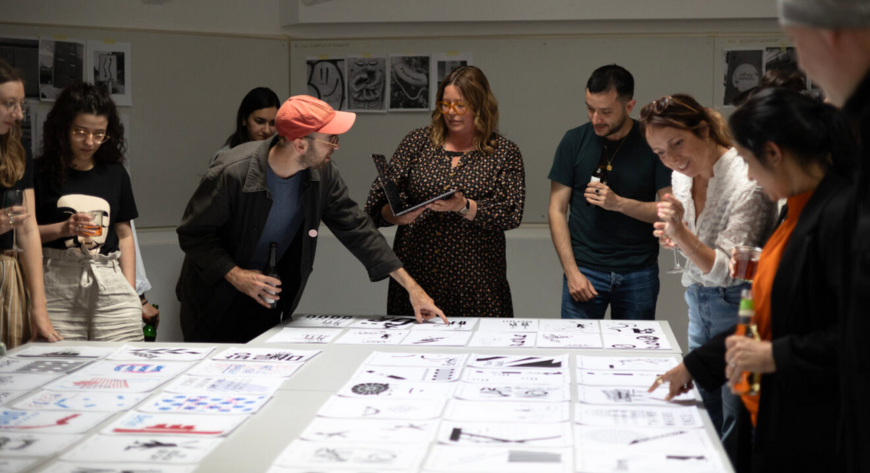
"It's completely turned everything I've known about graphic design upside down and made me approach design in a different way. I feel confident enough to go for mid or senior level roles now."
Max Bloom, MA Graphic Design
"The connection and conversations with industry professionals is something that I believe Falmouth do really well and here online is no exception."
Jamie Baldwin, MA Graphic Design
Careers
This world-leading graphic design course will push you to assert yourself as an adaptable and highly knowledgeable designer. You will gain with the capability to respond to creative challenges at a very high level. You will emerge from your MA in Graphic Design (Online) as a skilled and thoughtful individual, with the confidence to take on the next ambitious steps in your design career.
Careers and employability service
In addition to the guidance offered by our tutors, you can also access our RealWORKS, our careers and employability service throughout your studies, and for up to 5 years following graduation.
Our expert team will help you identify potential opportunities in the UK or internationally, prepare for job interviews, advise you on starting up your own business, and more.
Learn more about the opportunities available to you as a Graphic Design graduate:
Falmouth Flexible Graphic Design on Instagram
See what current and former MA Graphic Design students are up to in our latest @graphicdesign.online posts.
Teaching team
Designed with employer-focused learning at the core, the MA Graphic Design team work with global organisations, staff and alumni to provide you with the breadth of experience and networks needed to accelerate your career.
The course also includes a wide range of contributors, interviewees, and guest lecturers, such as:
- Eleni Beveratou, (Dalton Maag)
- Neef Rehman, (ustwo)
- Mads Wildgaard, (Bold Decisions)
- Dan Carroll, (Open as Usual)
- Daniel Eatock (www.eatock.com)
- Anthony Burrill (https://anthonyburrill.com)
- Sarah Madden (https://sarahmadden.co.uk)
- Paulus Dreibholz (https://www.dreibholz.com)
- Raj Dhunna (https://rajdhunna.com)
- Alexis Mark, Annual Reportt (https://www.alexismark.com)
- Yuki Kappes (https://yukikappes.com)
- Kristoffer Soelling, (Regular Practice)
-
Craig Oldham (https://www.craigoldham.co.uk)
-
Laura Gordon (https://www.laura-g.co.uk)
-
Lawrence Azerrad, (LADdesign)
-
Netta Peltola (https://nettapeltola.com)
-
Damien Borowik (https://dborowik.com)
-
Zenab Bastawala
-
Patrick Thomas (@xpatrickthomas)
-
Sascha Lobe (@sascha_lobe)
-
Tom Foley, (Monotype)
-
Aarika Hernandez
-
Ophelia Ford-Welman
-
Studio Makgill
-
Mariana Sameiro (@marianasameiro)
-
Patrick Thomas and Anthony Burrill (London Design Festival)
-
Simon Manchipp (SomeOne)
-
Julian House and Adrian Talbot (Intro)
-
Sam Winston (samwinston.com)
-
Sarah Boris (sarahboris.com)
-
Maziar Raein (Oslo National Academy of the Arts)
-
Anthony Sheret and Edd Harrington (Colophon Foundry)
-
Andrew Sanigar (Thames & Hudson)
-
Angharad Lewis (Grafik)
-
Darren Wall (Read Only Memory)
How to apply
To apply, you'll need to submit the following:
| An online application form | |
| A copy of your first degree certificate or Level 6 equivalent qualification | |
| Your IELTS certificate if English is not your first language | |
| A digital portfolio of your graphic design practice. This may include previous project work and your current work-in-progress. It can take the form of a link to your blog or website and/or be presented as an interactive PDF. This will help the admissions team assess your suitability. |
Late applications may be considered if places are available. Find out more about applying:
Take your first step to success.
Latest Graphic Design resources
MA Graphic Design students explore Dutch Design Week
Explore the vibrant world of graphic design at Dutch Design Week through the eyes of Falmouth's MA Graphic Design students.
Graphic Design students featured in The Science Museum's Digital Lab
Falmouth Flexible MA Graphic Design students have been featured in The Science Museum Group Digital Lab.
MA Graphic Design students visit the Patrick Thomas studio in Berlin
Find out more about our MA Graphic Design students' visit to the Patrick Thomas studio.
.webp)




